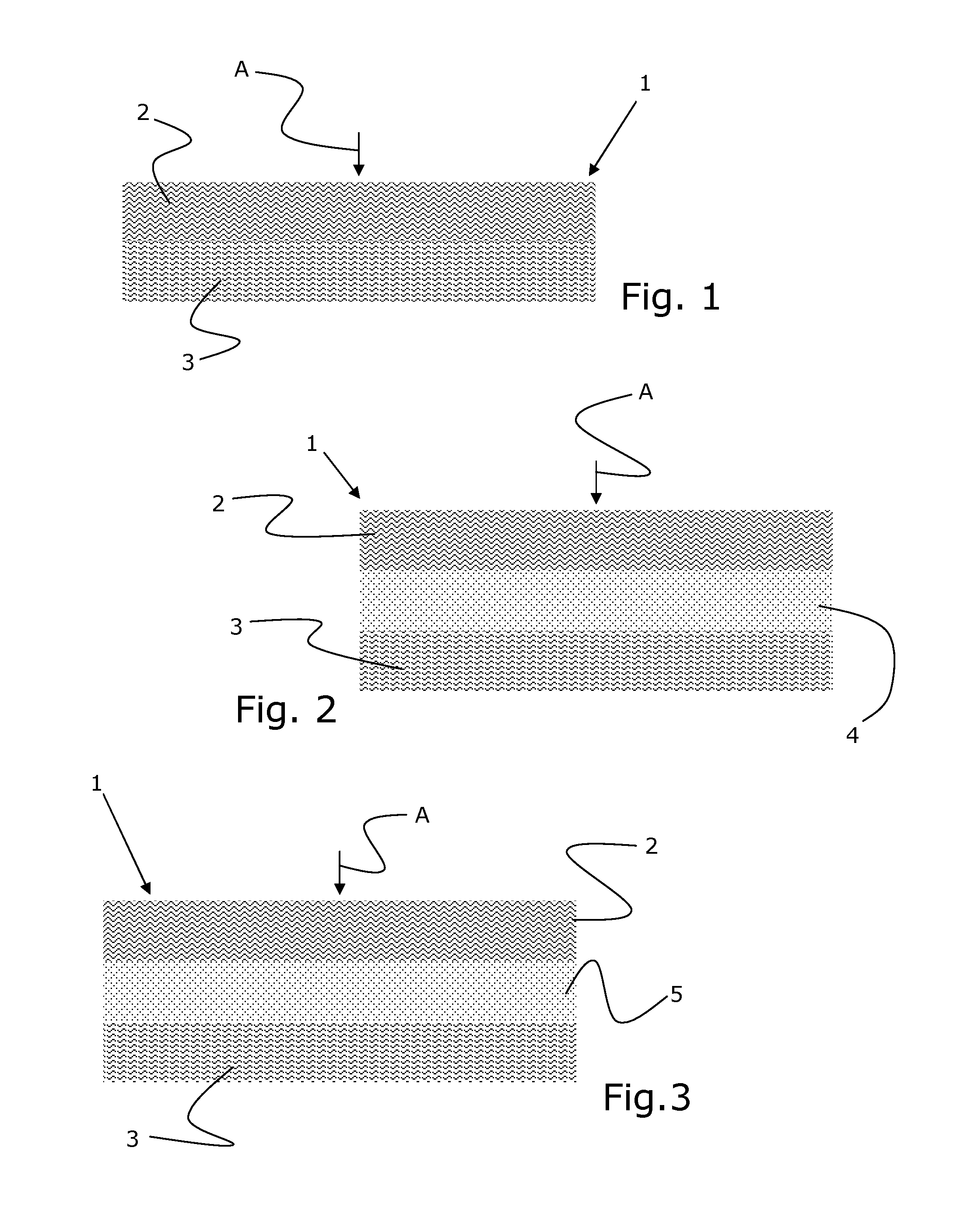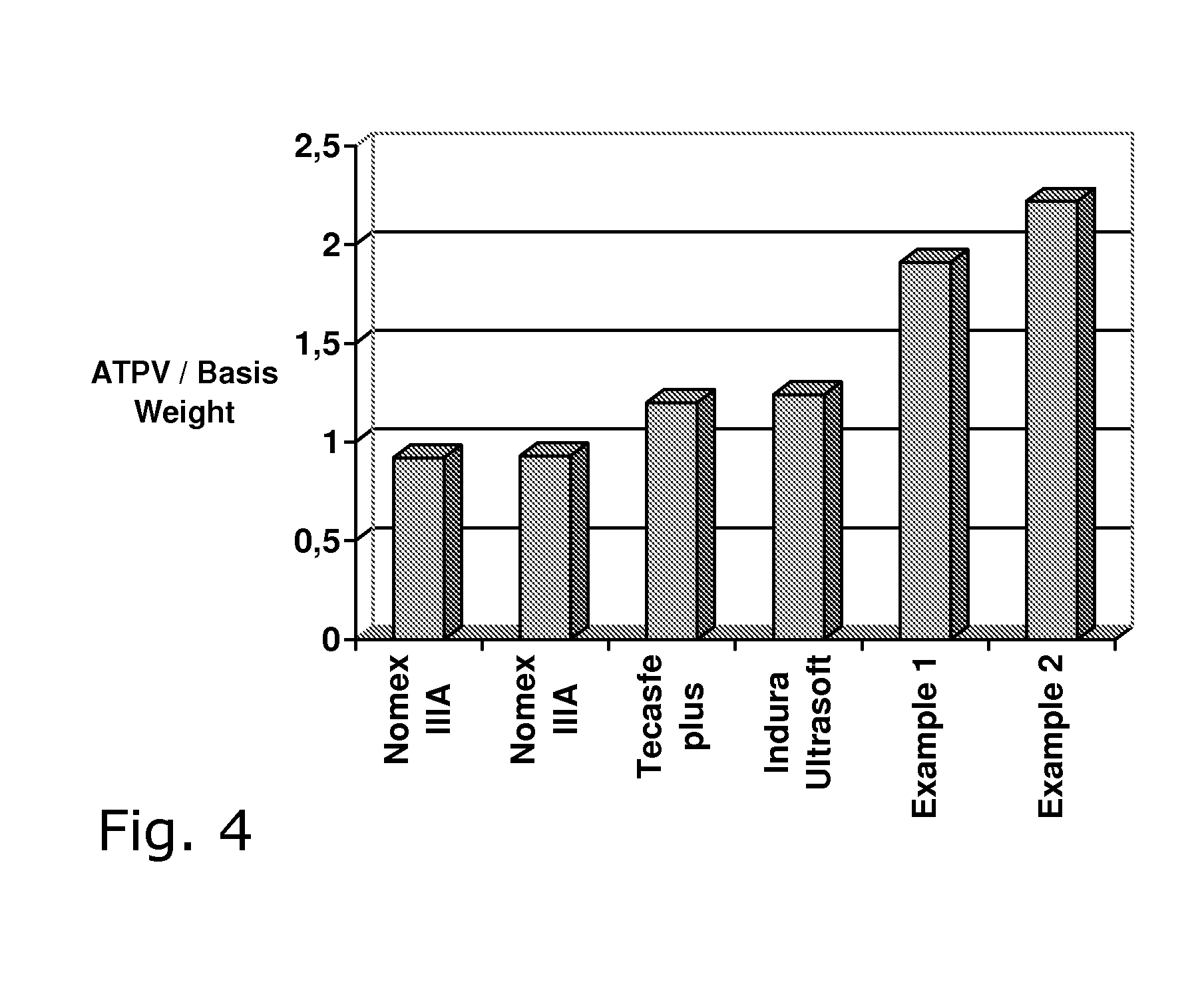Arc flash protection, multiple-use nonwoven fabric structure
a non-woven fabric and flash protection technology, applied in the direction of protective garments, weaving, garments, etc., can solve the problems of affecting the strength and durability of cellulosic fibers, flammable clothing or textiles, and releasing dangerous intense energy into the space surrounding electrical equipment, so as to improve the strength and durability of the fabric, improve the dimensional stability and flame resistance performance, and improve the durability of the fabric. , the effect of reducing the strength and durability of the cell a multi-use non-woven fabric structure of arc flash protection and non-woven fabric structure of a multi-use non-woven fabric technology of arc flash protection and non-woven fabric structure of a non-woven fabric technology, applied in the field of arc flash protection and non-woven fabric structure of a non-woven fabric technology, applied in the field of arc flash protection and multiple-use non-woven fabric technology, applied in protective garments, arc flash protection and arc flash protection
- Summary
- Abstract
- Description
- Claims
- Application Information
AI Technical Summary
Benefits of technology
Problems solved by technology
Method used
Image
Examples
example 1
[0078]In this embodiment, the fabric structure consists of three layers.
[0079]Layer 1, the outer layer of the nonwoven composite, is the arc facing surface of the fabric structure and is composed from Cotton and Nylon 6,6 fibers, the Cotton fibers having an average staple length of approximately 27 mm and a micronaire value of approximately 4.7, and the Nylon 6,6 fibers having an average staple length of approximately 38 mm and a linear density of 1.9 dtex.
[0080]The said fibers were thoroughly opened and blended in a ratio of 60% Cotton and 40% Nylon 6,6 using convention staple fiber preparation equipment to assure a uniform distribution and blend of the two fiber types in a form suitable for subsequent feeding to the web formation system. The pre-opened and blended fibers were fed into the web formation system, in this case a random system.
[0081]In this example, the basis weight of the web formed was 55 g / m2.
[0082]To provide additional dimensional stability and performance, layer 2...
example 2
[0096]Again, in this embodiment, the fabric structure consists of three layers.
[0097]Layer 1, the outer layer of the nonwoven composite, is the arc facing surface of the fabric structure and is composed from Cotton, Nylon 6,6, and para-aramid fibers, the Cotton fibers having an average staple length of approximately 27 mm and a micronaire value of approximately 4.7, the Nylon 6,6 fibers having an average staple length of approximately 38 mm and a linear density of 1.9 dtex, and the para-aramid fibers having a staple length of approximately 63 mm and a linear density of 2.5 dtex.
[0098]The said fibers were thoroughly opened and blended in a ratio of 60% Cotton, 20% Nylon 6,6, and 20% para-aramid using convention staple fiber preparation equipment to assure a uniform distribution and blend of the two fiber types in a form suitable for subsequent feeding to the web formation system. The pre-opened and blended fibers were fed into the web formation system, in this case a random system.
[0...
PUM
| Property | Measurement | Unit |
|---|---|---|
| weight ratio | aaaaa | aaaaa |
| length | aaaaa | aaaaa |
| length | aaaaa | aaaaa |
Abstract
Description
Claims
Application Information
 Login to View More
Login to View More - R&D
- Intellectual Property
- Life Sciences
- Materials
- Tech Scout
- Unparalleled Data Quality
- Higher Quality Content
- 60% Fewer Hallucinations
Browse by: Latest US Patents, China's latest patents, Technical Efficacy Thesaurus, Application Domain, Technology Topic, Popular Technical Reports.
© 2025 PatSnap. All rights reserved.Legal|Privacy policy|Modern Slavery Act Transparency Statement|Sitemap|About US| Contact US: help@patsnap.com



